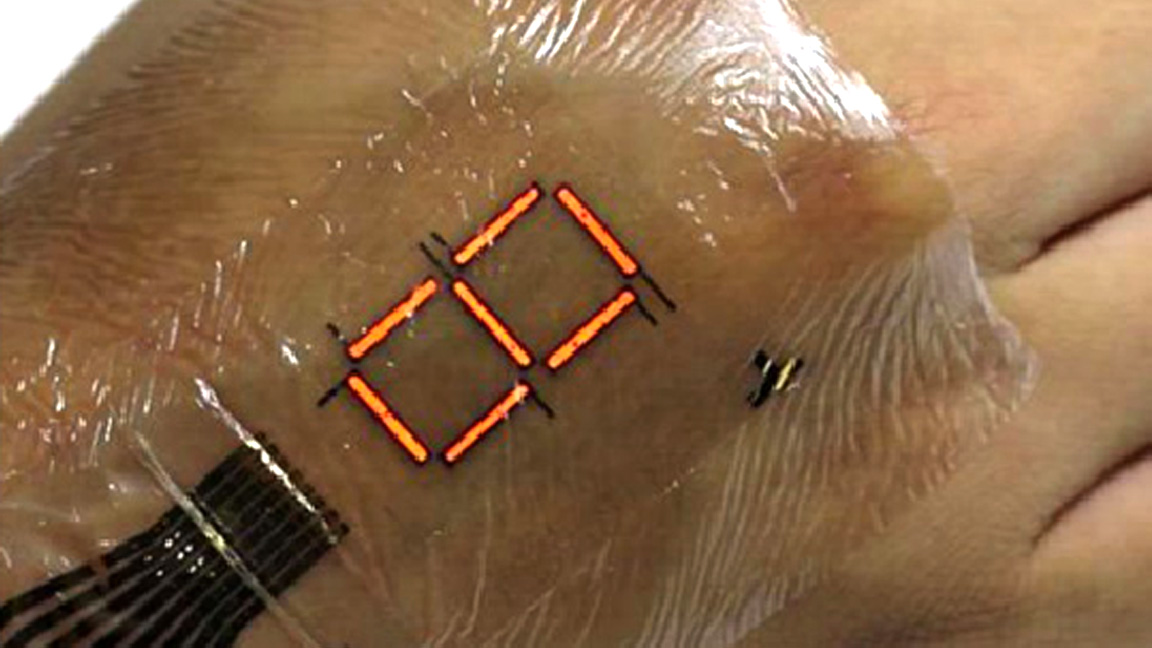Your next fitness tracker could be on your skin
Super-flexible polymers could replace screens

The secret to any good wearable piece of tech is making it not feel like wearing tech. The lighter, softer, and more flexible the machinery, the better, and what could feel more natural than your own skin?
This is the idea behind "ultraflexible organic photonic skin," an incredibly thin layer of polymer light-emitting diodes, or PLEDs, that merge to create a sort of e-skin that turns your own body into a wearable device.
The material, developed by researchers at the University of Tokyo, is comprised of a super-small, stretchable sheet of tiny lights that can emit primary colors similar to a pixel-screen display.
According to the team behind the tech, the entire system is only 3 μm thin - thinner than the topmost epidermal layer of human skin - and can function as a display or sensor without cracking of poking during movement.
One prototype was able to discreetly measure oxygen levels in a subject after being laminated onto a fingertip, while another demonstrated a simple numerical display that lit up numbers like a calculator screen, only it was on the back of a person's hand.
Skin is in
This isn't the first time we've seen wearable sensors go skin tight, with a studio in Austin, Texas working on "tech tats" that could monitor a user's vitals with the appearance of a temporary tattoo, and several other recent moves made in the world of biometrics.
What sets these sensors apart is not only their sheer... sheerness, but also a protective coating that can keep out moisture and air better than similar concepts, allowing the stuck-on sensor to last longer without falling off like a day-old Band-Aid.
Sign up for breaking news, reviews, opinion, top tech deals, and more.
While it may take a little more development before e-skin grafts replace your Apple Watch or Fitbit, the potential uses for body monitors no more intrusive than slapping on a sticker can only be matched the pure coolness of the word "e-skin."
Also the future - riding roller coasters in VR
